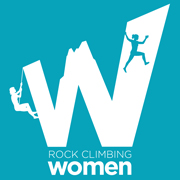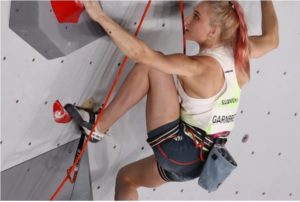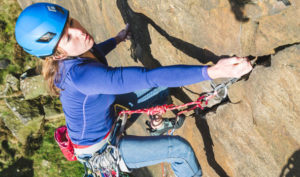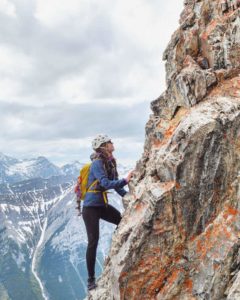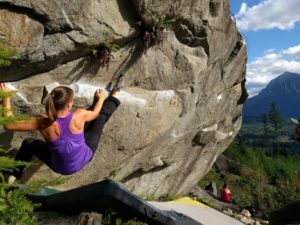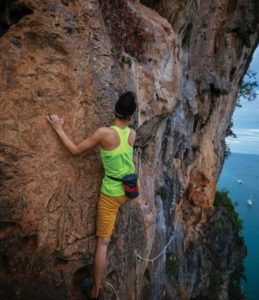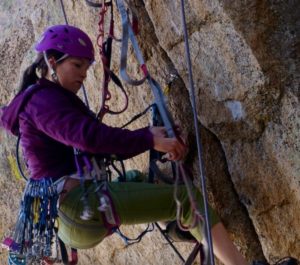I first started climbing in 2006 after moving to Flagstaff, AZ. Little did I know as I was purchasing my gym membership and very first shoes, ATC, and harness, climbing would become a lifelong passion for me. What I also discovered along the way is that there are enough types of climbing (and ALL the gear to go along with each) to make your head spin.
My path of discovery started on an artificial wall in a climbing gym. In these early days, I spent my evenings after work with my neighbor and new found friend cheering each other up top-roping routes. We would watch the cool kids on the lead climbing wall and think how we would probably pee ourselves if we had to take an actual fall while climbing.
As we became stronger and more confident, we decided to join a women’s bouldering course. With this group of women, we would learn how to push our boundaries and guide each other safely back to our crash pads.
Then we took it a step further and went outside with the amazing (and extremely patient) woman, Sam, who had been running our bouldering class. Sam guided us on a full day of anchor building and outdoor climbing. A few short weeks later, Sam would also teach us how to be a less fearful lead climber as well as an excellent lead belayer.
My experience of climbing with Sam and the extraordinary women of our group brought me an incredible sense of empowerment and I have endeavored to pass on that spirit of empowerment and community to the new climbers I have met along the way.
For me, climbing is a sport that meets me where I am on any given day. Maybe the lowlands are heating up and it’s time to plan something big in the cooler air of the alpine or maybe I’m feeling a bit lazy so we take the crash pads out for some bouldering (maybe) and napping (definitely).
Before you can take advantage of all that the sport of climbing has to offer however, you need to know your options in the form of all the types of climbing out there in the world.
Types and Styles of Climbing:
-
Free Climbing:
Whether it’s lead climbing or top-rope climbing, free climbing means you climb routes using hand and foot holds (or smears) on rock faces or an artificial wall. Free climbing is the most diverse in terms of types of climbing.
- Sport Climbing involves clipping draws and rope into bolts that have been drilled into the rock face until you reach the anchor at the top.
- Traditional Climbing (or Trad Climbing) requires climbers ascend routes on their own protective climbing gear.
- Alpine Climbing or Mountaineering is usually trad climbing done above the treeline in higher elevations.
This is a very committing style of climbing that may involve hiking your gear into a base camp and definitely requires that you are prepared for rapid changes in weather, varied terrain, spicy runouts, and a hike down from the summit or multiple rappels.
- Multi-Pitch Climbing can be either sport or trad, low elevation or alpine.
A multi-pitch climb is a climb that cannot be completed without establishing one or more intermediary anchors before you reach the anchor at the top of the route or top out on (find yourself finally walking again on the top of) your climbing objective.
Some multi-pitch climbs can be done in a day while others may need a portaledge so you can camp out on your route. Sometimes you get to hike down from the top, while other times you may find yourself completing multiple rappels to get back to the base.
- Bouldering, as I pointed out earlier, comes with a built in napping option. Boulderers ditch ropes and harnesses in favor of crash pads to protect falls. Crash pads look like mattresses with backpack straps.
If ever there was a style of climbing that involves a community effort, it’s bouldering. Boulderers combine forces in the form of spotting each other in the event a climber falls.
Spotting means guiding each other as safely as possible down to the crash pads they have all pooled together at the base of a route, being especially mindful of protecting that climber’s noggin.
If boulderers are short on pads, they watch the climber and move available padding around so that it is positioned to catch a call.
- Free Soloing isn’t just that movie starring Alex Honnold. A form of free climbing, free soloing ditches all of the climbing gear and pits you against the rock in a race to the top. Yeah, feel those chills. No ropes, no harnesses, no belay device, no partner.
There is a more PG version of free soloing called deep water soloing. Deep water soloing still lets you ditch all the gear (I recommend keeping the partner just because it’s always more fun to climb with a friend) but you get to climb over a nice, deep body of water. This is an excellent solution when hot summer temps make you feel like your climbing shoes are melting into rubber puddles on the wall.
-
Aid Climbing
differs from all of the other climbing in that it’s what you do when you can’t free climb a route. Using traditional climbing gear along with other specialized equipment such as aid ladders and fifi hooks, climbers ascend to the top of routes that are otherwise unclimbable using the rock face.
-
Ice Climbing
is the style of climbing with which I have the least amount of experience because, not gonna lie, I don’t like to be cold. To ascend an ice climb you need a whole different set of gear that includes boots, crampons, ice axes, ice screws, and some solid winter attire.
Within each of these types of climbing there exist climbs at every level of difficulty. Truly climbing lets you decide how you want to explore your own physical and mental boundaries.
Climbing gives you opportunities to build your confidence and strength as well as your community. Knowing more about the styles of climbing is an important first step on your journey to becoming completely hooked.
Exploring common comparisons such as sport climbing vs lead climbing or free climbing vs sport climbing will give you a more detailed picture of what each style looks like in real life so that you can pick the climbing path that gets you inspired to go out and crush!
Subscribe to our awesome newsletter below and get the answers and inspiration you’re looking for to go out and crush!
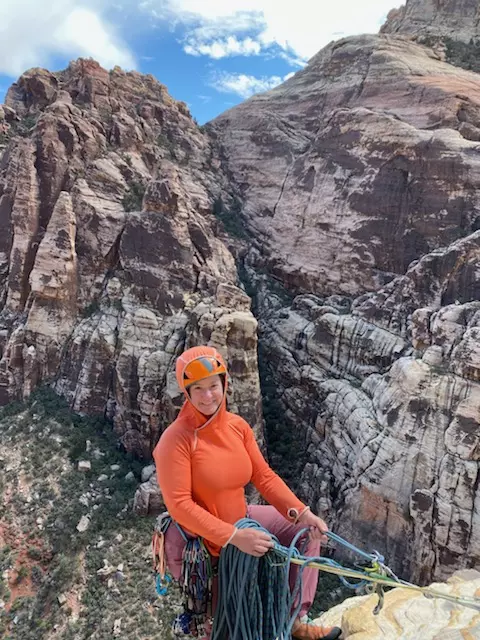
Jenny Nichols got her climbing start in Flagstaff, AZ in 2007. Today she lives in Seattle, WA where she works as a K-12 teacher. While she also dabbles in mountain biking, hiking, and kayaking, her passion is to combine climbing and international travel. To date she has climbed in thirteen different countries. She’s currently also learning how to woman a sailboat.
